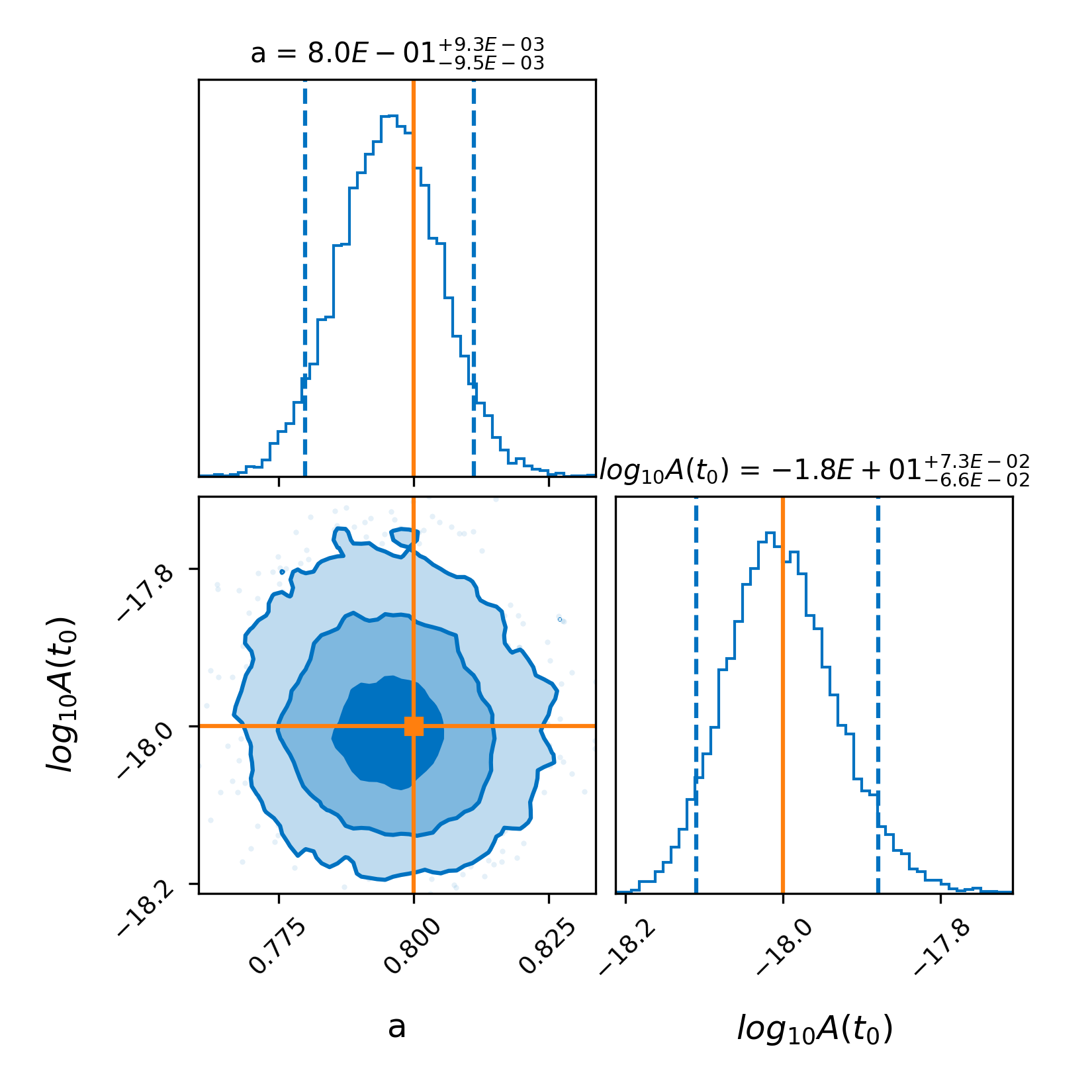Addressing Non Stationary Processes in PTA data
Recent analyses of the Parkes Pulsar Timing Array (PPTA) data have revealed hints of non-stationarity in the tentative stochastic gravitational wave background (GWB) signal. Although the cause of this non-stationarity is difficult to pinpoint, it is useful to develop tools that can systematically quantify and explore such behavior. This project approaches the problem from a wavelet-based perspective, using the time-frequency localization capabilities of wavelets to detect and characterize non-stationary features in pulsar timing residuals. The tool maybe applicable more generally, to non-stationary noise processes in PTA datasets beyond the GWB context. The goal is to address the apparent non-stationarity of PTA processes and to complement the existing wavelet-based methods in the literature.

the figure shows that our method accurately recovers the true parameters (in orange).